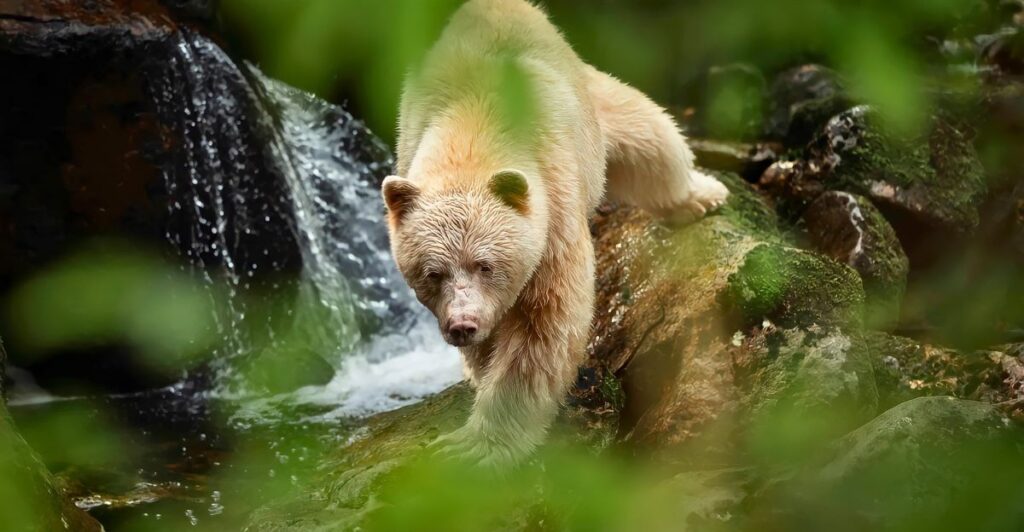
Most people assume the world’s biggest bears roam the Arctic or deep in the Alaskan wilderness—but one of the largest and most fascinating bears on Earth has a unique connection to the U.S. The Kermode bear, or Spirit Bear, is a rare subspecies of the American black bear, famous for its ghostly white fur. Found mainly in Canada, its genetic ties stretch across North America, raising an intriguing question: Could these legendary bears exist in the U.S.?
What Is the Kodiak Bear (Ursus arctos middendorffi)?
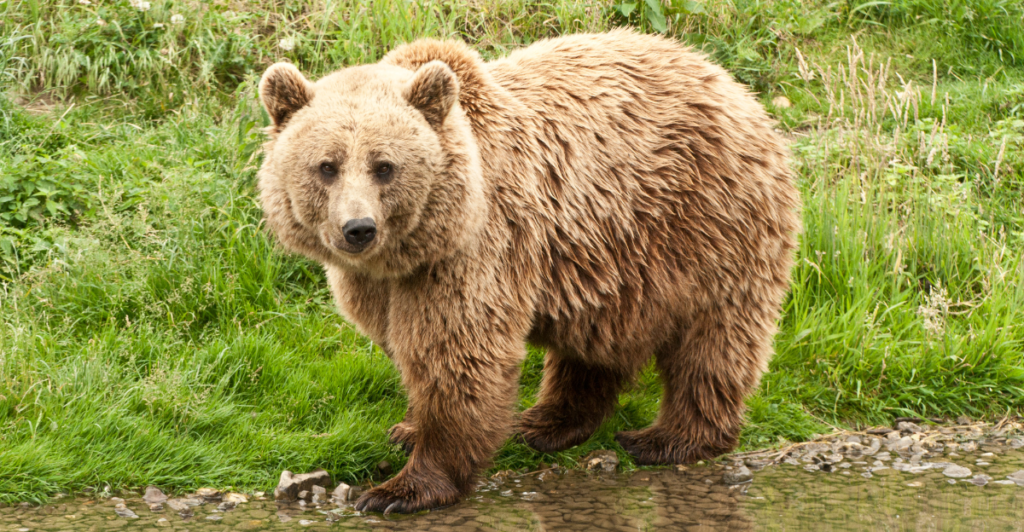
The Kodiak bear (Ursus arctos middendorffi) is a massive subspecies of the brown bear, rivaling even the polar bear in size. Native only to Alaska’s Kodiak Archipelago, these bears have evolved in isolation for thousands of years, developing unique characteristics.
Their remote habitat, abundant food sources, and absence of natural predators allow them to grow larger than typical brown bears. With some males exceeding 680 kg (1,500 lbs), they are among the largest land carnivores on Earth. Scientists study Kodiak bears to understand their adaptations, behavior, and ecological role.
As apex predators, they help maintain balance in their ecosystem, influencing fish populations and vegetation. These extraordinary bears offer a glimpse into the power of nature and the importance of conservation efforts to protect them
Just How Big Are Kodiak Bears?
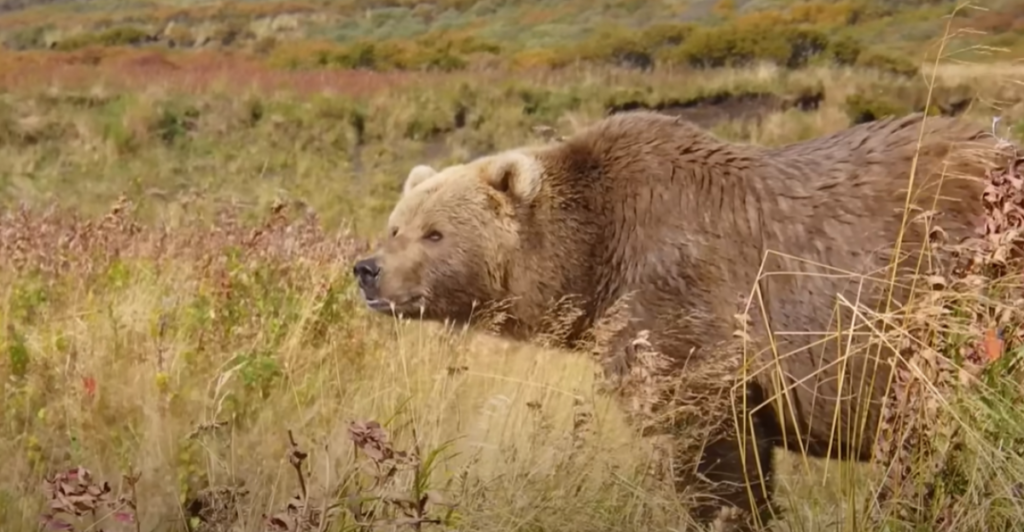
Kodiak bears (Ursus arctos middendorffi) rank among the largest land carnivores, rivaling polar bears in size. Adult males typically weigh between 300–600 kg (660–1,320 lbs), but some surpass 680 kg (1,500 lbs).
The heaviest wild Kodiak bear on record weighed 751 kg (1,656 lbs), while a captive specimen named Clyde reached an astonishing 966 kg (2,130 lbs). When standing on their hind legs, these giants can reach up to 3 meters (9.8 feet) tall. Despite their bulk, they are remarkably fast, running at speeds of 56 km/h (35 mph).
Their immense size is due to a rich diet, primarily salmon, and the lack of predators in their isolated habitat. With powerful limbs, sharp claws, and dense fur, Kodiak bears are well-equipped for survival in Alaska’s rugged wilderness.
Where Do Kodiak Bears Live?
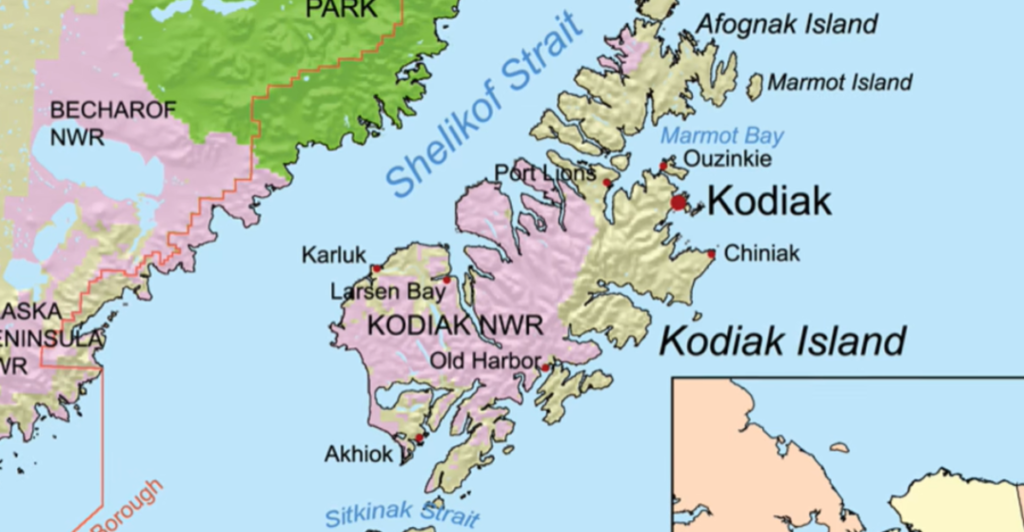
Kodiak bears are found exclusively on the Kodiak Archipelago, a remote island chain off the southern coast of Alaska. This isolated habitat, separated from the mainland for over 12,000 years, has allowed Kodiak bears to develop a distinct genetic lineage.
The islands provide a rich and diverse ecosystem, with salmon-filled rivers, lush vegetation, and coastal food sources that support the bears’ massive dietary needs. Their home consists of dense forests, open meadows, and rugged mountain terrain, offering a variety of food sources year-round.
The lack of natural predators and minimal human interference have helped maintain a stable population. Due to their limited range, Kodiak bears are one of the most closely studied bear populations in the world, providing valuable insights into bear ecology and conservation.
What Do Kodiak Bears Eat?
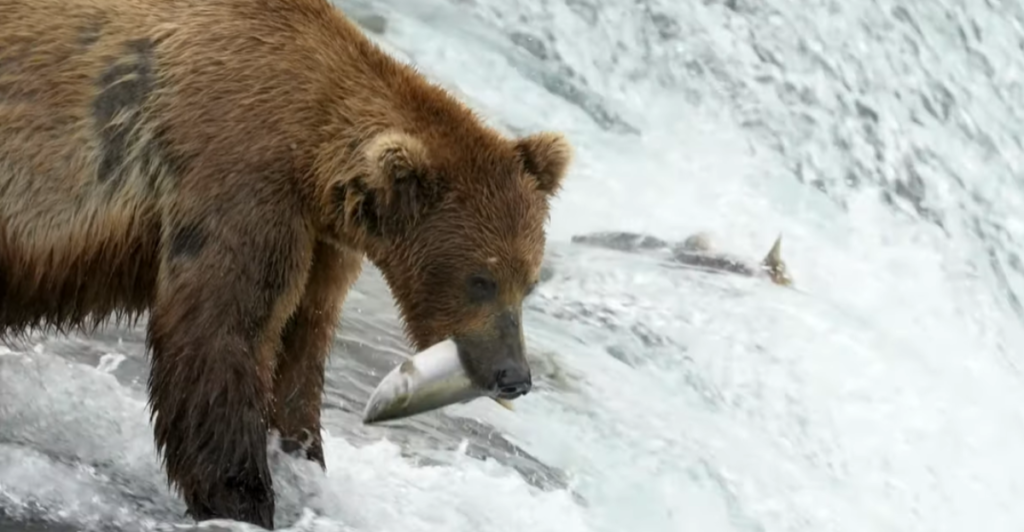
Despite their fearsome reputation, Kodiak bears are omnivores, with a diet consisting largely of salmon, berries, roots, and vegetation. During peak salmon runs in summer and fall, these bears gorge themselves on fish, storing enough fat to sustain them through Alaska’s harsh winters.
Unlike their grizzly cousins, who often scavenge or hunt large prey, Kodiak bears rely heavily on the seasonal abundance of food in their island habitat. They also eat small mammals, seaweed, and even carrion when available.
Their varied diet ensures they get the necessary nutrients to maintain their massive size and survive harsh winters. The ability to adapt their diet to what is available plays a crucial role in their long-term survival, helping them remain one of the most resilient bear species.
How Do Kodiak Bears Compare to Other Bears?
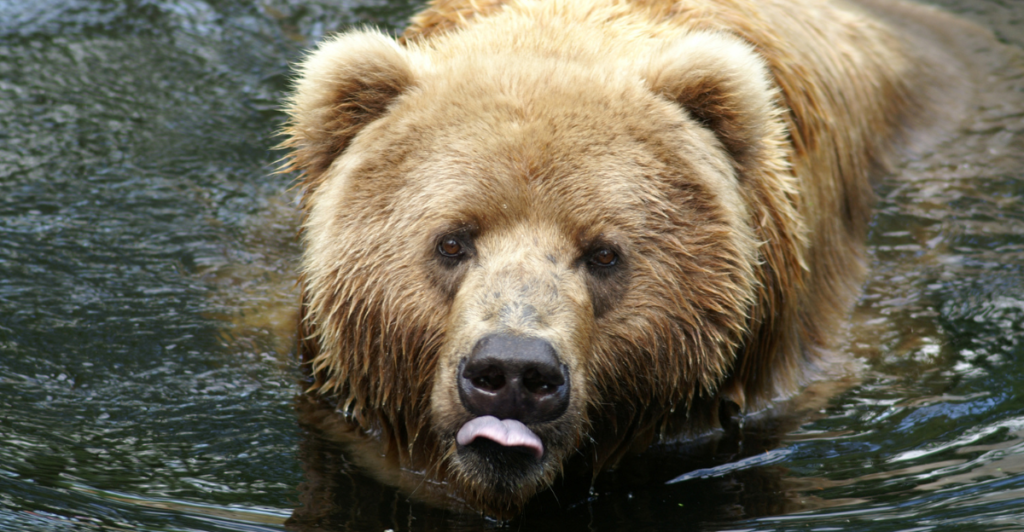
While polar bears (Ursus maritimus) are often considered the largest bear species, individual Kodiak bears have been known to reach comparable sizes. However, the two species differ significantly in behavior and habitat.
Polar bears are specialized marine hunters adapted to icy environments, whereas Kodiak bears thrive in temperate coastal forests. Compared to grizzlies, Kodiak bears are generally larger, with broader skulls and less aggressive tendencies due to the lack of competition in their habitat.
Grizzly bears, found on the mainland, often face more threats and must be more territorial, while Kodiak bears live in a relatively stable environment. Their sheer size and strength make them an apex predator, but their behavior is shaped by their unique island existence, making them less aggressive than other brown bear subspecies.
The Role of Kodiak Bears in Their Ecosystem
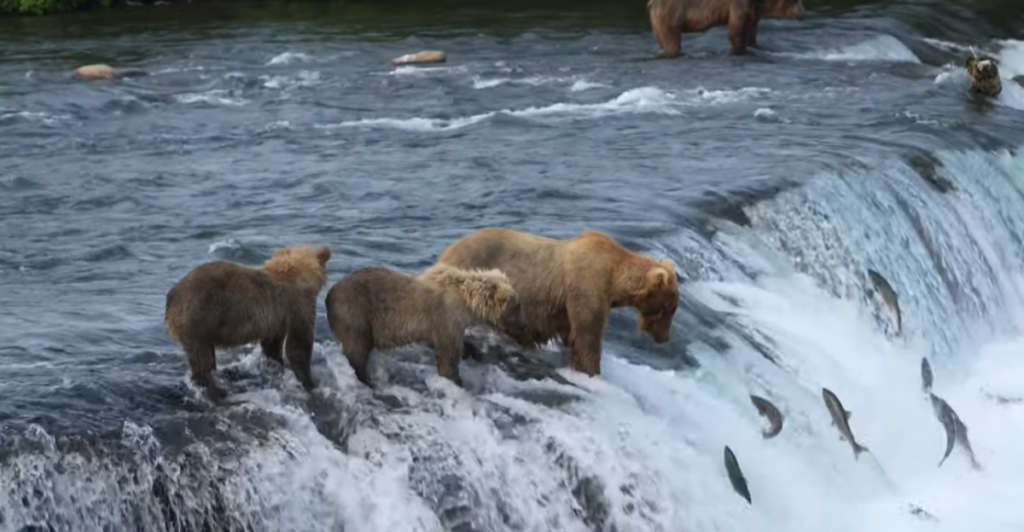
As apex predators, Kodiak bears play a crucial role in maintaining the ecological balance of their island environment. Their consumption of salmon helps regulate fish populations, while their foraging behavior contributes to seed dispersal and soil fertilization.
By spreading nutrients from the ocean to the forest, Kodiak bears indirectly support plant growth and the overall health of their ecosystem. They also help control smaller animal populations and distribute nutrients through their droppings. Their presence impacts the entire food chain, making them an essential part of their habitat.
Scientists monitor their behavior to better understand the health of the Kodiak Archipelago’s ecosystem. Any changes in the bear population can signal shifts in environmental conditions and food availability.
Human Interaction and Conservation Efforts
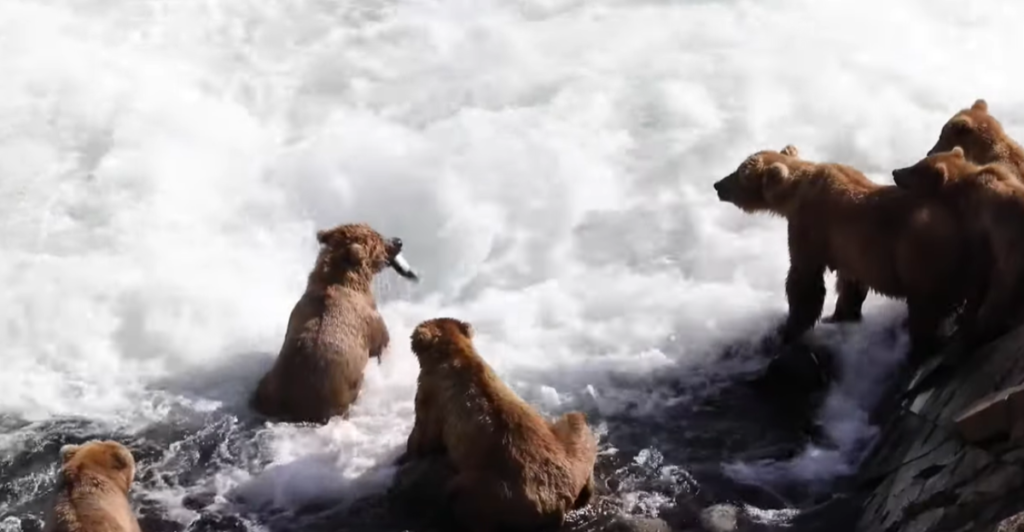
Despite their remote habitat, Kodiak bears occasionally interact with humans, particularly in areas where fishing, hunting, and tourism occur. The Alaska Department of Fish and Game actively manages the population to ensure both bear and human safety.
Conservation efforts, including habitat protection and strict hunting regulations, have kept Kodiak bear numbers stable at around 3,500 individuals. Thanks to careful wildlife management, Kodiak bears are not currently threatened, unlike many bear populations worldwide.
Hunting is strictly regulated, and only a limited number of permits are issued each year. Conservationists work to educate the public on coexistence strategies, ensuring that human activities do not disrupt the bears’ natural behaviors or lead to unnecessary conflicts that could threaten their survival.
How to See Kodiak Bears in the Wild
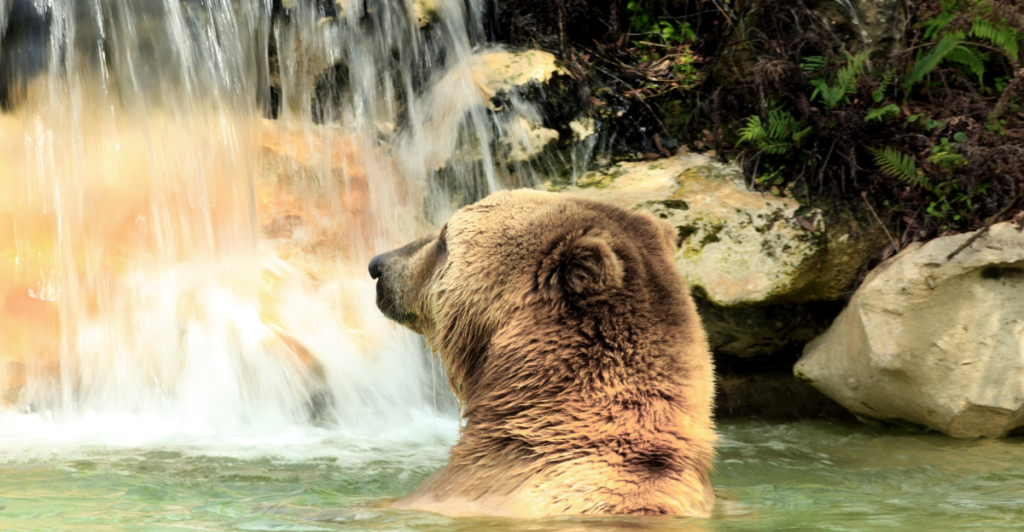
For wildlife enthusiasts, observing a Kodiak bear in its natural habitat is a breathtaking experience. Katmai National Park and Kodiak National Wildlife Refuge offer some of the best bear-viewing opportunities in the world.
Guided tours and bear-watching platforms allow visitors to witness these giants up close while ensuring minimal disturbance to the animals. Summer and early fall, when salmon runs peak, are the best times to see Kodiak bears in action. Experienced guides help tourists safely observe bears from a distance, providing education on their behaviors and conservation.
Strict guidelines ensure that human presence does not impact the bears’ natural activities, allowing them to continue thriving while still offering visitors a rare glimpse into their fascinating world.
The Future of Kodiak Bears
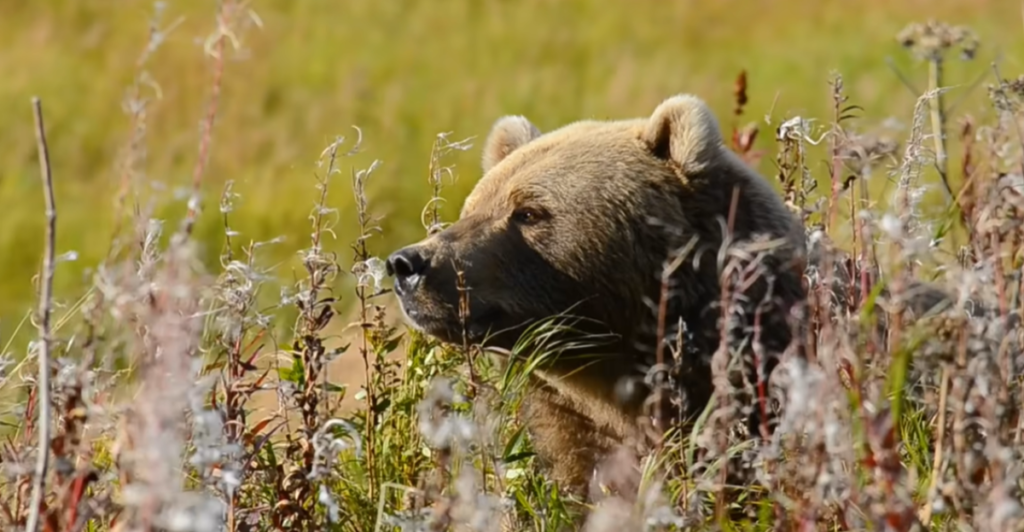
While Kodiak bears currently enjoy a stable population, climate change and habitat shifts pose potential long-term threats. Warming temperatures could impact salmon populations, a vital food source for these bears.
Conservationists continue to monitor their habitat and advocate for sustainable practices to protect both the bears and their environment. With ongoing efforts, these magnificent giants are likely to thrive for generations to come. The delicate balance of their ecosystem depends on responsible conservation and awareness.
As long as their habitat remains protected, Kodiak bears will continue to reign as some of the largest and most awe-inspiring creatures in the wild, symbolizing the untamed beauty of Alaska’s wilderness.
Explore more of our trending stories and hit Follow to keep them coming to your feed!

Don’t miss out on more stories like this! Hit the Follow button at the top of this article to stay updated with the latest news. Share your thoughts in the comments—we’d love to hear from you!







